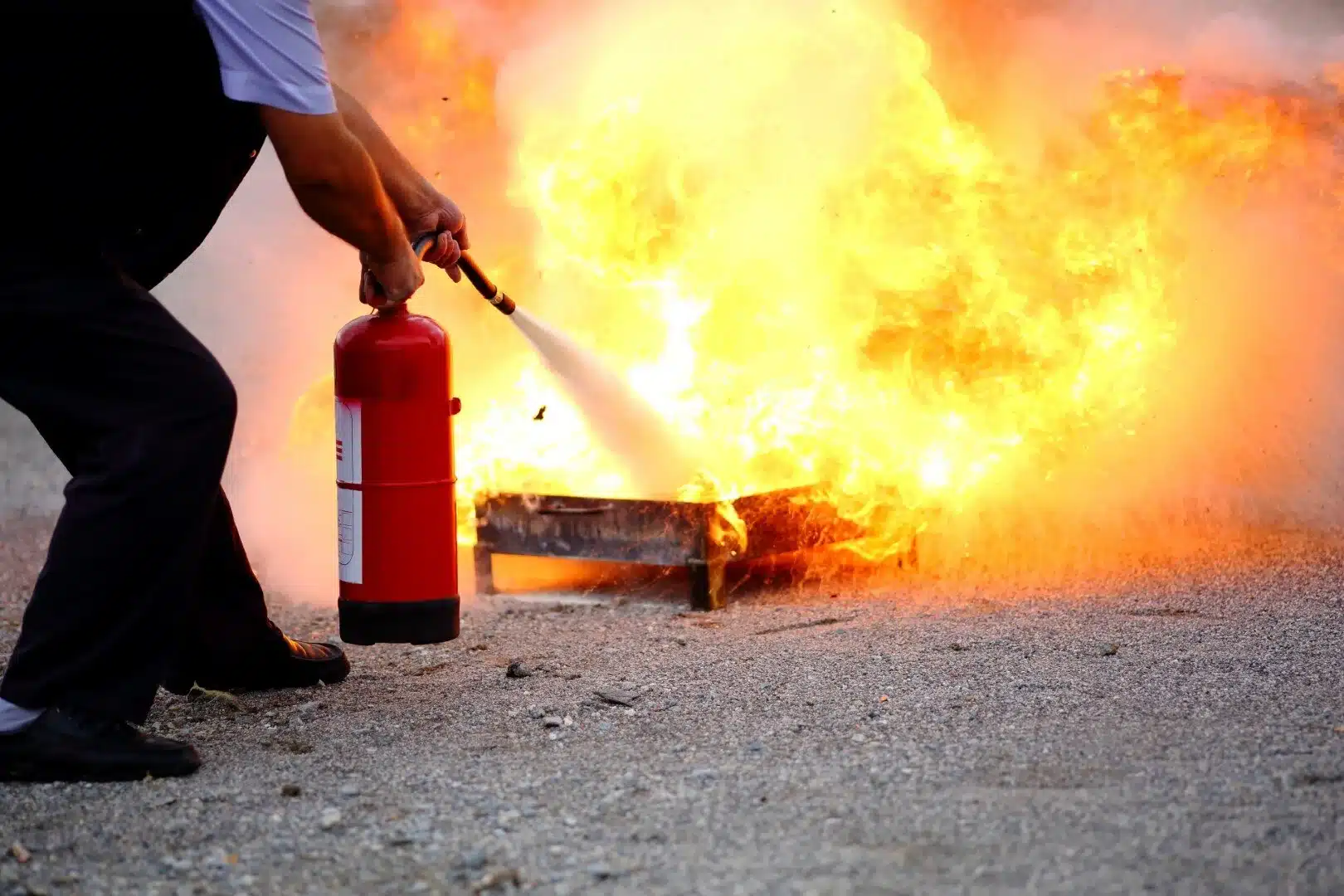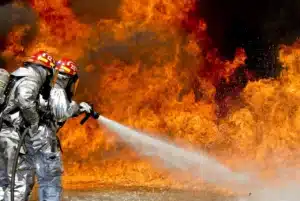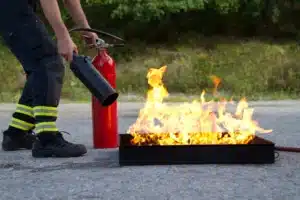Fire safety remains one of the most critical responsibilities for landlords and property managers across London. With the capital’s unique mix of Victorian conversions, modern high-rises, HMOs, and purpose-built flats, understanding and addressing fire hazards isn’t just about regulatory compliance it’s about protecting lives and preserving property value.
Every year, London Fire Brigade responds to thousands of residential fires, many of which could have been prevented through proper awareness and maintenance. Whether you manage a single buy-to-let in Wandsworth or a portfolio of HMOs across Camden and Hackney, recognizing common fire safety hazards and knowing how to fix them is essential to fulfilling your duty of care and avoiding potentially devastating consequences.
Why Fire Safety Awareness Matters in London
London’s housing landscape presents unique fire safety challenges. The city’s property stock ranges from Grade II listed Georgian townhouses to modern apartment blocks, each with distinct vulnerabilities. Older properties in boroughs like Islington and Kensington often feature outdated electrical systems and period features that, while charming, can pose significant fire risks if not properly maintained.
HMOs across East London and student accommodations in areas like King’s Cross face particular scrutiny under current fire safety legislation. The Regulatory Reform (Fire Safety) Order 2005 places clear responsibilities on landlords to conduct regular fire risk assessments and maintain proper safety measures. Following the implementation of stricter building safety regulations in recent years, enforcement has intensified, with local authorities taking non-compliance increasingly seriously.
For landlords, fire safety awareness translates directly into legal protection, insurance validity, and tenant satisfaction. Properties that fail to meet fire safety standards face enforcement notices, prohibition orders, or even criminal prosecution. More importantly, inadequate fire safety measures put tenants’ lives at risk a responsibility no landlord should take lightly.
Common Fire Safety Hazards in London Properties
Faulty or Outdated Electrical Systems
Electrical faults remain the leading cause of residential fires across the UK, and London properties are no exception. Many rental homes, particularly Victorian and Edwardian conversions popular in South London boroughs like Lambeth and Southwark, still operate on electrical installations that predate modern safety standards.
Warning signs include frequently tripping circuit breakers, flickering lights, burning smells near outlets, and discolored sockets. Properties that haven’t undergone an Electrical Installation Condition Report (EICR) within the past five years pose significant fire risks. Aging wiring becomes brittle, insulation deteriorates, and connections loosen all creating conditions ripe for electrical fires.
The solution requires professional electrical inspection and remedial work. All landlords must ensure their properties meet current wiring regulations, with mandatory EICRs conducted at least every five years or at each change of tenancy. Upgrading consumer units to include residual current devices (RCDs) adds crucial protection against electrical fires caused by earth faults.
Overloaded Sockets and Extension Leads
In London’s compact living spaces particularly studio flats and HMO rooms across North London tenants frequently overload electrical sockets to power multiple devices. This common fire safety hazard occurs when the combined amperage exceeds the socket’s 13-amp limit, causing overheating that can ignite surrounding materials.
Extension leads daisy-chained together or running under carpets present equally dangerous scenarios. The heat generated cannot dissipate properly, and damaged cables hidden from view create ignition points that may smolder for hours before bursting into flame.
Prevention starts with tenant education. Provide clear guidance on safe electrical use during move-in inspections. Ensure properties have sufficient socket outlets in bedrooms and living areas a particular concern in converted HMOs where room layouts may not reflect modern electrical demands. Replace any damaged extension leads immediately and prohibit their use for high-power appliances like heaters or kettles.
Blocked Fire Exits and Poor Escape Routes
Fire exits obstructed by bicycles, storage boxes, or communal clutter represent one of the most easily preventable yet commonly encountered fire safety hazards in London properties. Shared hallways in converted houses across areas like Brixton and Streatham often become dumping grounds for residents’ belongings, creating dangerous bottlenecks during emergency evacuations.
Equally problematic are locked communal doors along escape routes, inadequate lighting in stairwells, and fire doors wedged open for convenience. In HMOs, where multiple households share common areas, maintaining clear escape routes requires constant vigilance and clear house rules.
Regular property inspections should verify that all fire exits remain accessible, emergency lighting functions properly, and escape routes are clearly marked. Communal areas need robust management policies backed by tenancy agreements that prohibit storage in hallways and stairwells. For HMOs and buildings with multiple occupancies, consider installing fire safety signage that clearly indicates escape routes and assembly points.
Missing or Faulty Fire Alarms
Smoke alarms save lives a fact supported by decades of fire safety statistics. Yet many London rental properties still operate with insufficient alarm coverage, expired devices, or units disabled by tenants frustrated with false alarms triggered by cooking steam.
Current regulations require smoke alarms on every floor and heat alarms in kitchens for all rental properties. Interconnected alarms provide additional safety, ensuring that a fire starting in one area triggers alerts throughout the property—crucial in multi-floor Victorian conversions common across West London.
Landlords must test all alarms at the start of each tenancy and ensure batteries are functional. Alarms should be replaced every ten years, regardless of apparent functionality. For HMOs, a professional Fire Safety Inspection in London typically identifies whether your alarm system meets the enhanced standards required for such properties, including potentially networked systems linked to a control panel.
Poor Fire Door Maintenance
Fire doors are engineered to contain fires and smoke, providing residents with precious minutes to escape. However, their effectiveness depends entirely on proper maintenance and correct installation—areas where many London properties fall short.
Common issues include damaged or missing intumescent strips, failed self-closing mechanisms, gaps around door frames exceeding 4mm, and missing or damaged smoke seals. In HMOs across boroughs like Tower Hamlets and Newham, fire doors protecting escape routes and separating individual letting rooms require particular attention.
Annual fire door inspections should check all components: hinges, closers, seals, and the door frame integrity. Tenants must understand never to prop fire doors open or remove closing mechanisms. Any damaged fire door requires immediate repair or replacement—this isn’t an area where landlords can defer maintenance. Properties subject to fire risk assessments will have fire door compliance thoroughly examined, with deficiencies flagged for urgent action.
Kitchen Fire Risks
Kitchens generate more domestic fires than any other room, with unattended cooking, grease buildup, and faulty appliances creating multiple ignition sources. In London HMOs where multiple tenants share kitchen facilities, these risks multiply significantly.
Grease-laden extractor fans and filters become fire hazards themselves when not regularly cleaned. Portable cooking appliances left plugged in, tea towels near hobs, and cluttered worktops adjacent to heat sources all contribute to kitchen fire risks that professional inspectors routinely identify across London properties.
Prevention requires both proper equipment and tenant awareness. Ensure kitchens contain appropriate fire blankets and extinguishers, positioned accessibly but away from potential fire sources. Heat alarms rather than smoke detectors prevent false alarms while maintaining protection. Regular professional cleaning of extraction systems in HMOs prevents dangerous grease accumulation. Tenant information should emphasize never leaving cooking unattended and keeping flammable materials away from heat sources.
Lack of Emergency Lighting or Fire Extinguishers
Emergency lighting and fire extinguishers represent secondary fire safety measures that nonetheless play vital roles, particularly in HMOs and larger multi-occupancy properties. Emergency lighting illuminates escape routes when mains power fails—essential in windowless corridors common in converted properties throughout London.
Fire extinguishers appropriate to specific fire risks (water, CO2, or foam types) provide residents with options to tackle small fires before they spread. However, incorrect extinguisher types or poorly maintained equipment can create false confidence or even worsen situations.
HMO landlords must ensure emergency lighting functions correctly and undergoes annual testing. Fire extinguishers require annual servicing by competent technicians who verify pressure levels and check for damage. Placement matters: extinguishers should be positioned near exit points, clearly visible, and appropriate to the room’s fire risks. An expert Fire Risk Assessment service identifies whether your property requires these additional safety measures based on its specific layout and use.
How to Fix and Prevent These Hazards
Addressing fire safety hazards requires a systematic approach combining regular maintenance, professional inspections, and tenant cooperation. The most effective prevention strategy involves scheduled property checks that identify emerging issues before they become serious hazards.
Start with annual property safety reviews covering all fire safety equipment: alarms, extinguishers, emergency lighting, and fire doors. Electrical systems require attention every five years minimum through certified EICR inspections, with any remedial work completed promptly. Between professional inspections, landlords or property managers should conduct quarterly walk-throughs verifying that communal areas remain clear, fire exits stay accessible, and tenants haven’t introduced new risks.
Documentation proves crucial for both legal compliance and insurance purposes. Maintain detailed records of all inspections, tests, servicing, and repairs. For HMOs, this documentation becomes essential evidence that you’re meeting your enhanced fire safety obligations.
Tenant communication strengthens fire safety considerably. Provide clear written guidance on fire safety responsibilities, emergency procedures, and reporting maintenance issues. Many fire safety hazards in London properties persist simply because tenants don’t realize their significance or don’t know how to report concerns effectively.
Professional expertise makes the difference between surface-level compliance and genuine fire safety. While landlords can perform basic checks, comprehensive risk identification requires trained assessors who understand building regulations, fire dynamics, and London’s specific housing challenges. Properties that have undergone professional evaluation consistently demonstrate better fire safety outcomes than those relying solely on landlord self-assessment.
The Role of Fire Risk Assessments and Inspections
Fire risk assessments provide systematic evaluation of your property’s fire hazards, existing safety measures, and potential improvements. Required by law for HMOs and commercial premises, these assessments benefit all rental properties by identifying risks that non-specialists typically miss.
A comprehensive fire risk assessment examines ignition sources, fire spread potential, people at risk, and the adequacy of existing controls. Assessors evaluate escape routes, fire detection systems, emergency lighting, fire separation, and management procedures. The resulting report prioritizes recommended actions by urgency, providing landlords with a clear roadmap for improving fire safety.
For London landlords managing diverse property portfolios across different boroughs, professional fire safety inspections offer consistent evaluation standards regardless of property type or age. Inspectors familiar with London’s housing stock understand the specific challenges presented by period conversions in Chelsea versus purpose-built flats in Canary Wharf.
Regular inspections annually for HMOs, every three years for other rental properties ensure that fire safety measures remain effective as properties age and regulations evolve. These assessments also demonstrate due diligence to insurers, local authorities, and courts should questions arise about your fire safety compliance.
Beyond regulatory compliance, professional fire risk assessments frequently identify cost-effective improvements that enhance both safety and property value. Recommendations might include better fire separation between units, upgraded detection systems, or improved escape route signage—changes that protect tenants while potentially reducing insurance premiums.
Partnering with Fire Safety Experts in London
Navigating London’s fire safety requirements needn’t be overwhelming when you work with specialists who understand both the regulations and the practical realities of property management. Landlord Certification provides comprehensive fire safety services across North, South, East, and West London, supporting landlords and property managers in meeting their legal obligations while protecting their investments.
From initial fire risk assessments through to obtaining your Fire Safety Certificate, professional guidance ensures nothing gets overlooked. Experienced assessors bring detailed knowledge of local authority expectations across different London boroughs, understanding how fire safety requirements adapt to various property types from single-family homes in Richmond to complex HMO conversions in Brent.
Professional fire safety services extend beyond one-time inspections. Ongoing support includes periodic reassessments as properties change use, guidance on remedial works, and advice on maintaining compliance between formal inspections. This relationship-based approach means you have experts available when questions arise about new regulations or unusual situations.
For landlords managing multiple properties, centralized fire safety management through a single provider ensures consistent standards across your portfolio. Rather than coordinating various contractors for different properties, a comprehensive service handles fire risk assessments, inspections, and certification documentation through one point of contact.
Protecting Your Properties and Tenants
Fire safety hazards in London properties present serious risks, but they’re largely preventable through awareness, regular maintenance, and professional expertise. From electrical systems and overloaded sockets to blocked exits and poorly maintained fire doors, addressing these common issues protects both lives and livelihoods.
Your responsibilities as a landlord extend beyond providing accommodation they encompass ensuring that tenants can live safely and escape quickly should fire occur. This duty of care combines regulatory compliance with moral obligation, backed by the very real consequences of inadequate fire safety measures.
Don’t wait for an enforcement notice or, worse, an actual fire to address these hazards. Whether you manage a single flat in Croydon or multiple HMOs across Waltham Forest, professional fire safety assessment identifies risks specific to your properties and provides clear guidance on remediation.
Take action today to protect your tenants and your investment. Contact Landlord Certification to schedule a comprehensive fire safety inspection and ensure your London properties meet all current requirements. Our experienced team covers all London boroughs, providing expert fire risk assessments that give you confidence in your fire safety compliance and peace of mind that you’re meeting your responsibilities as a landlord.





